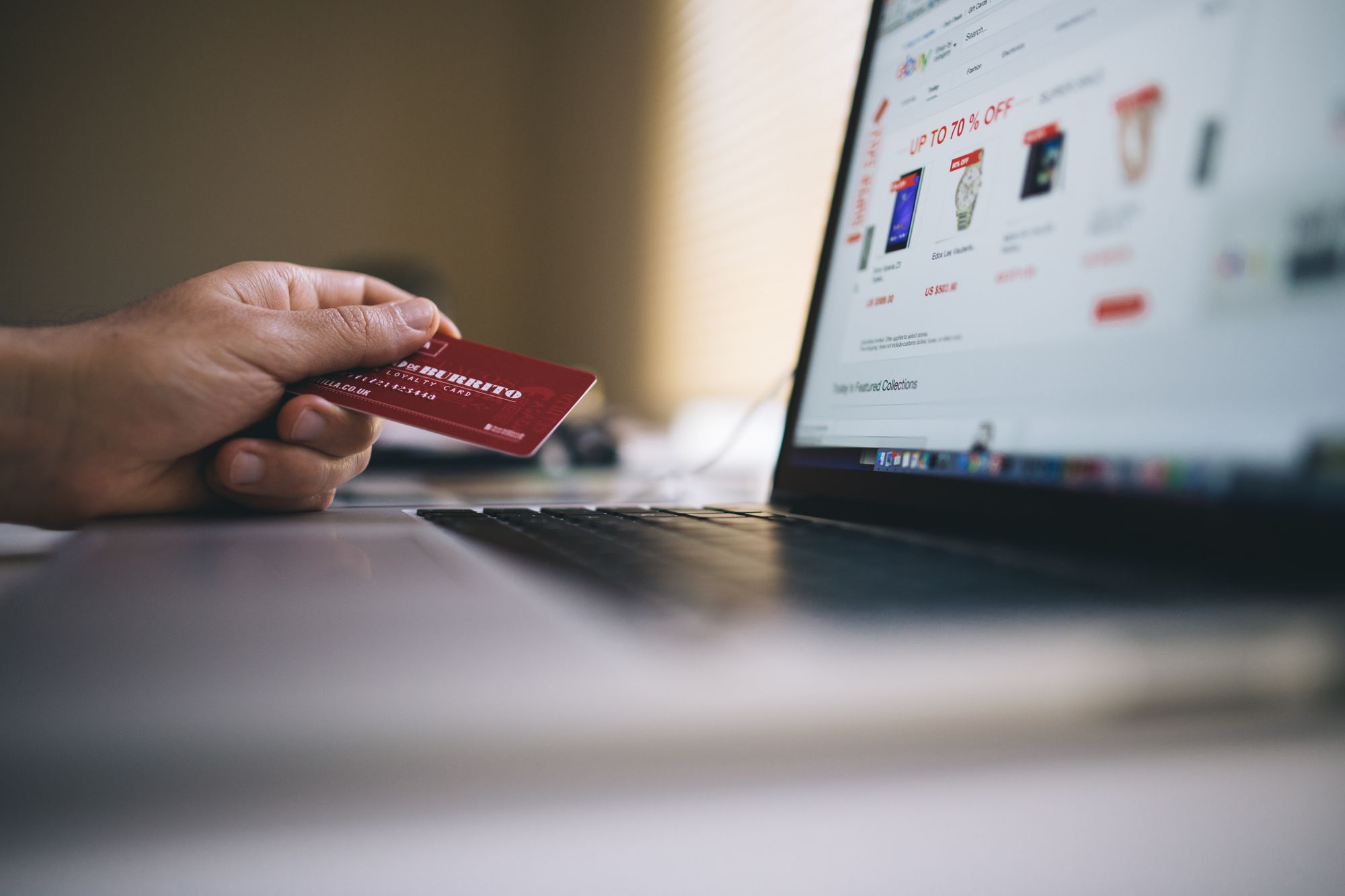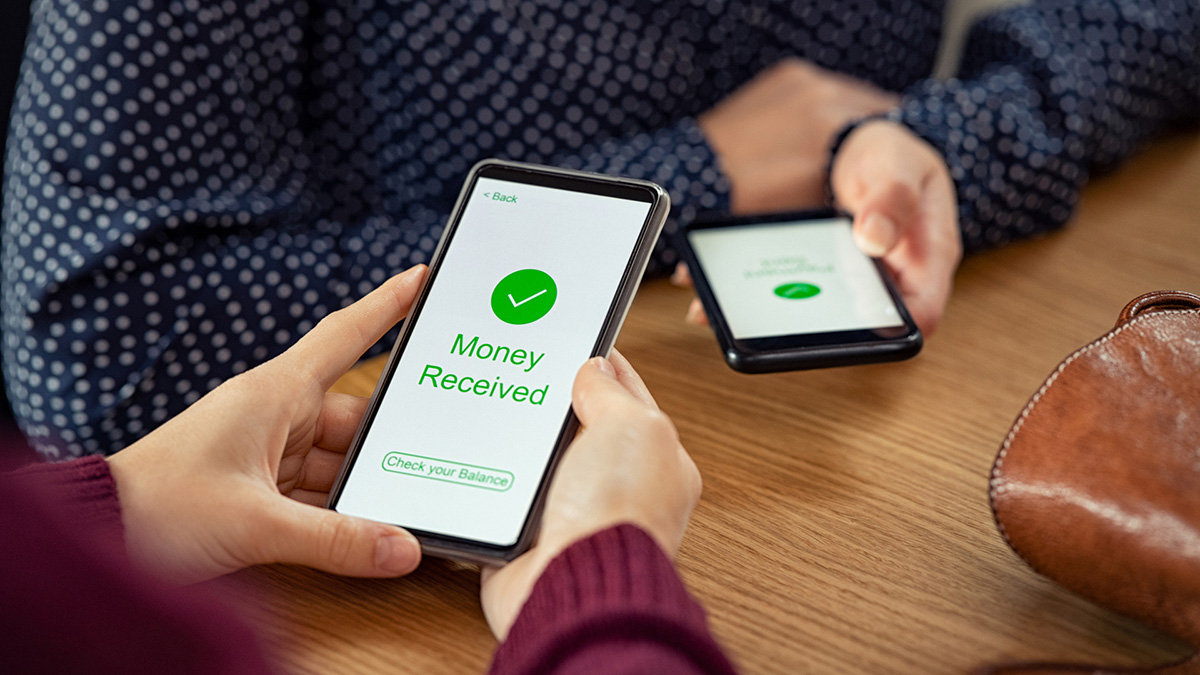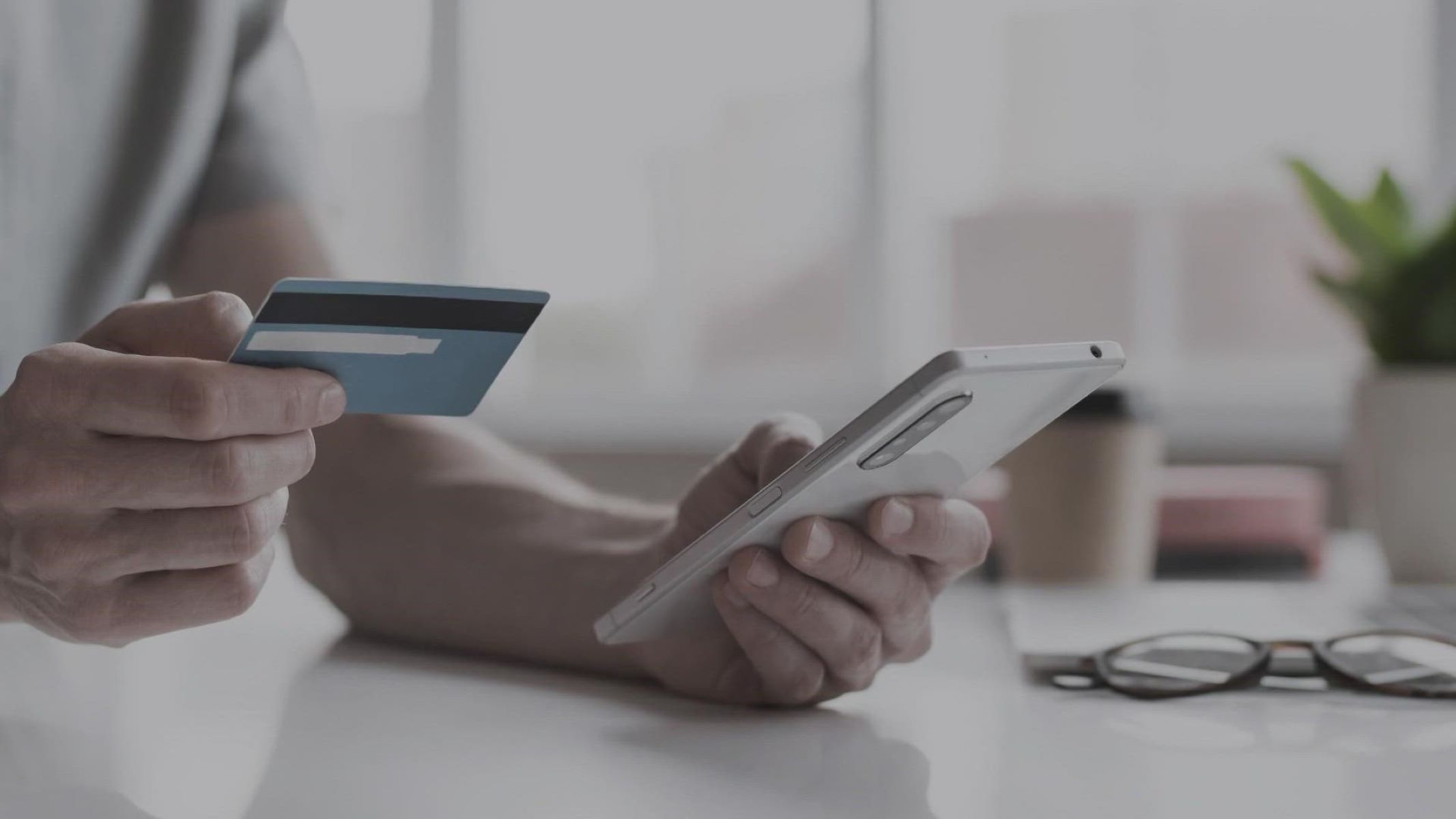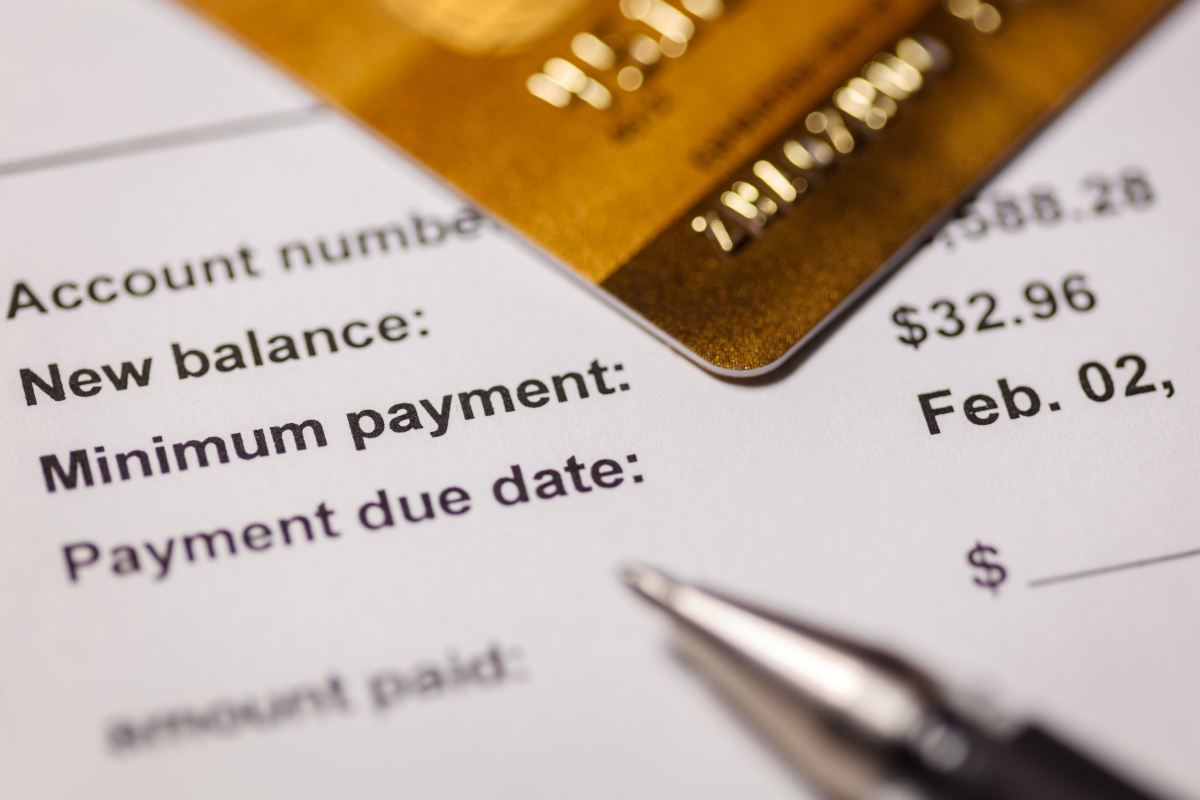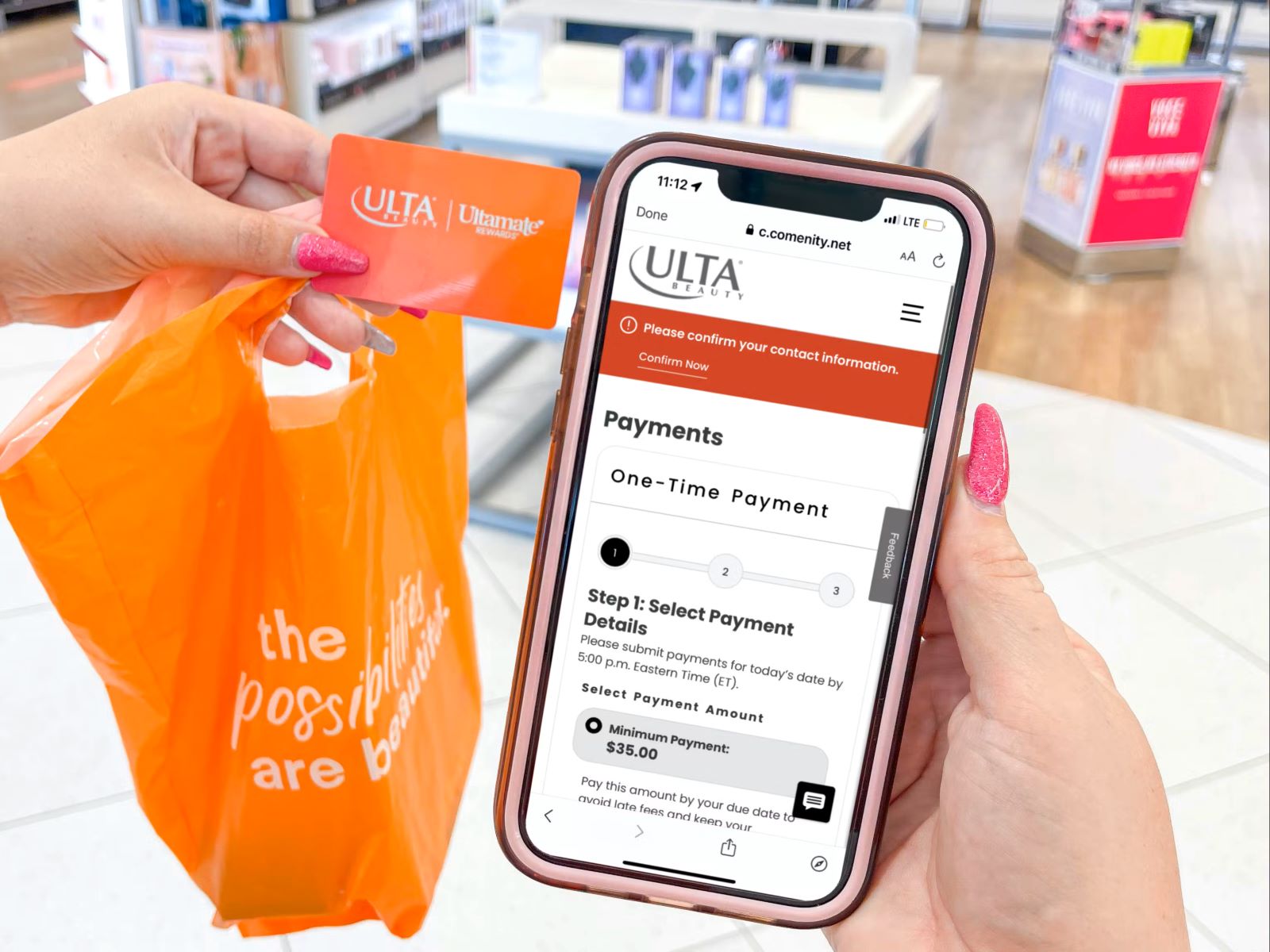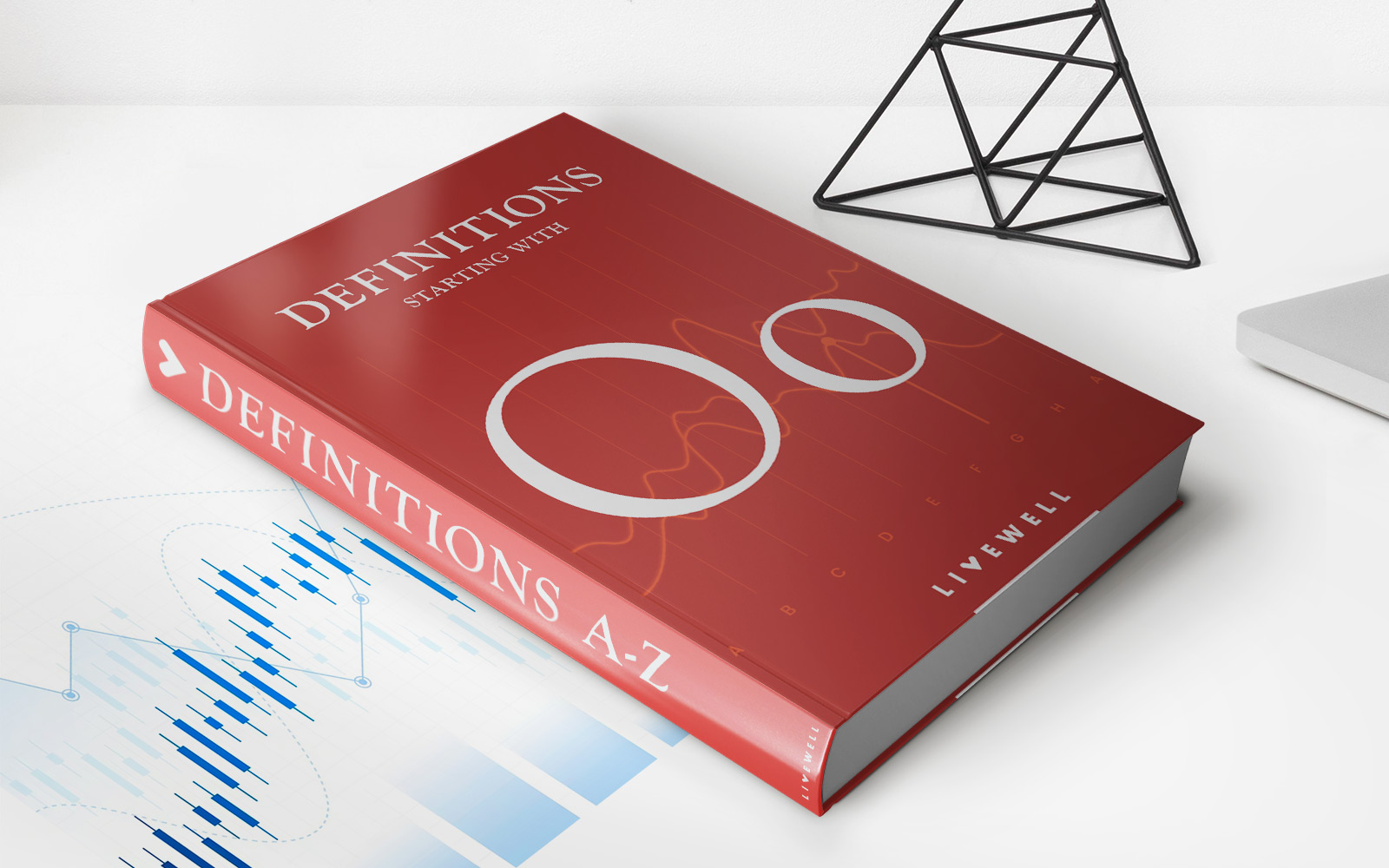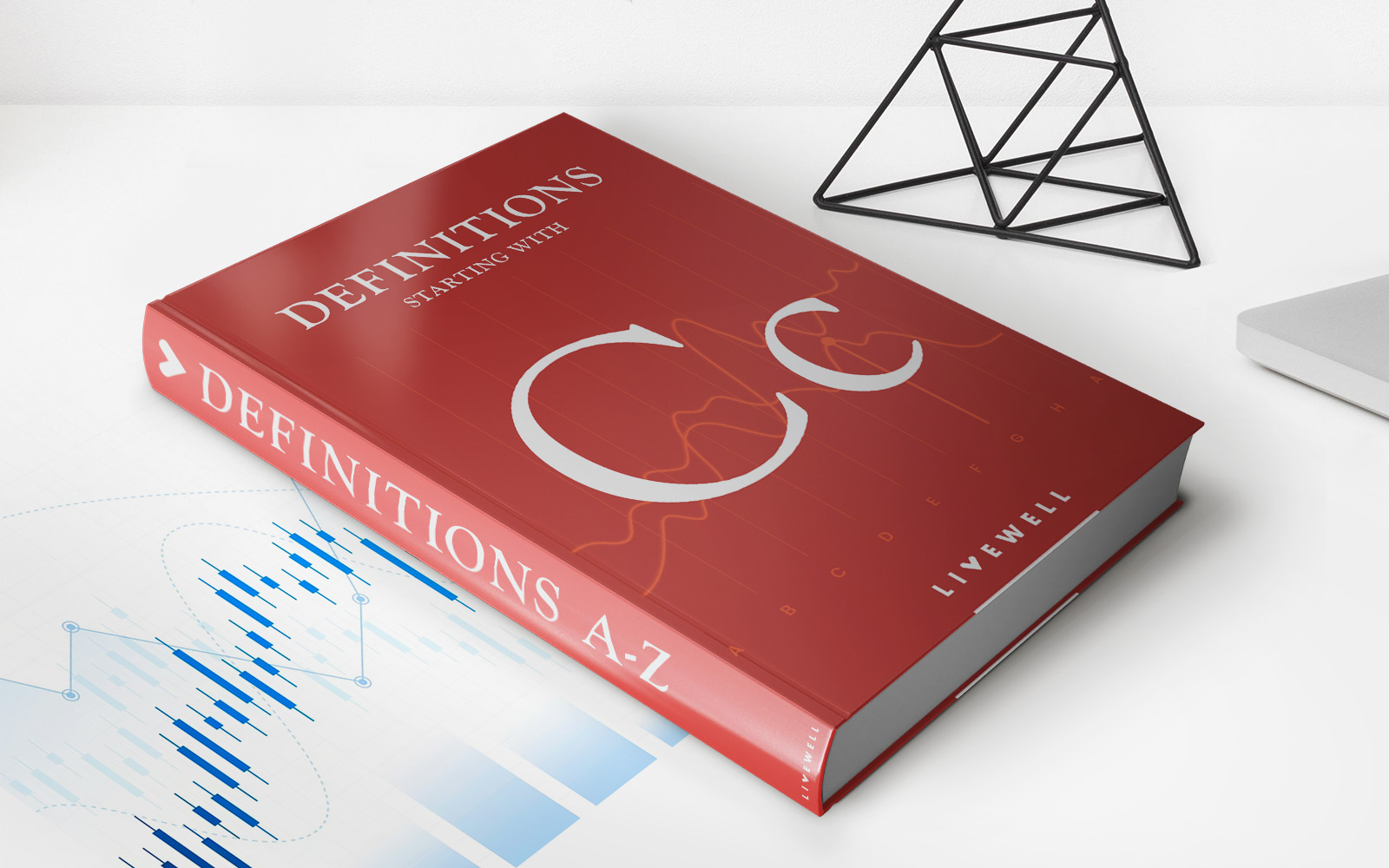Home>Finance>How To Pay Off $10 000 Credit Card Debt In 6 Months
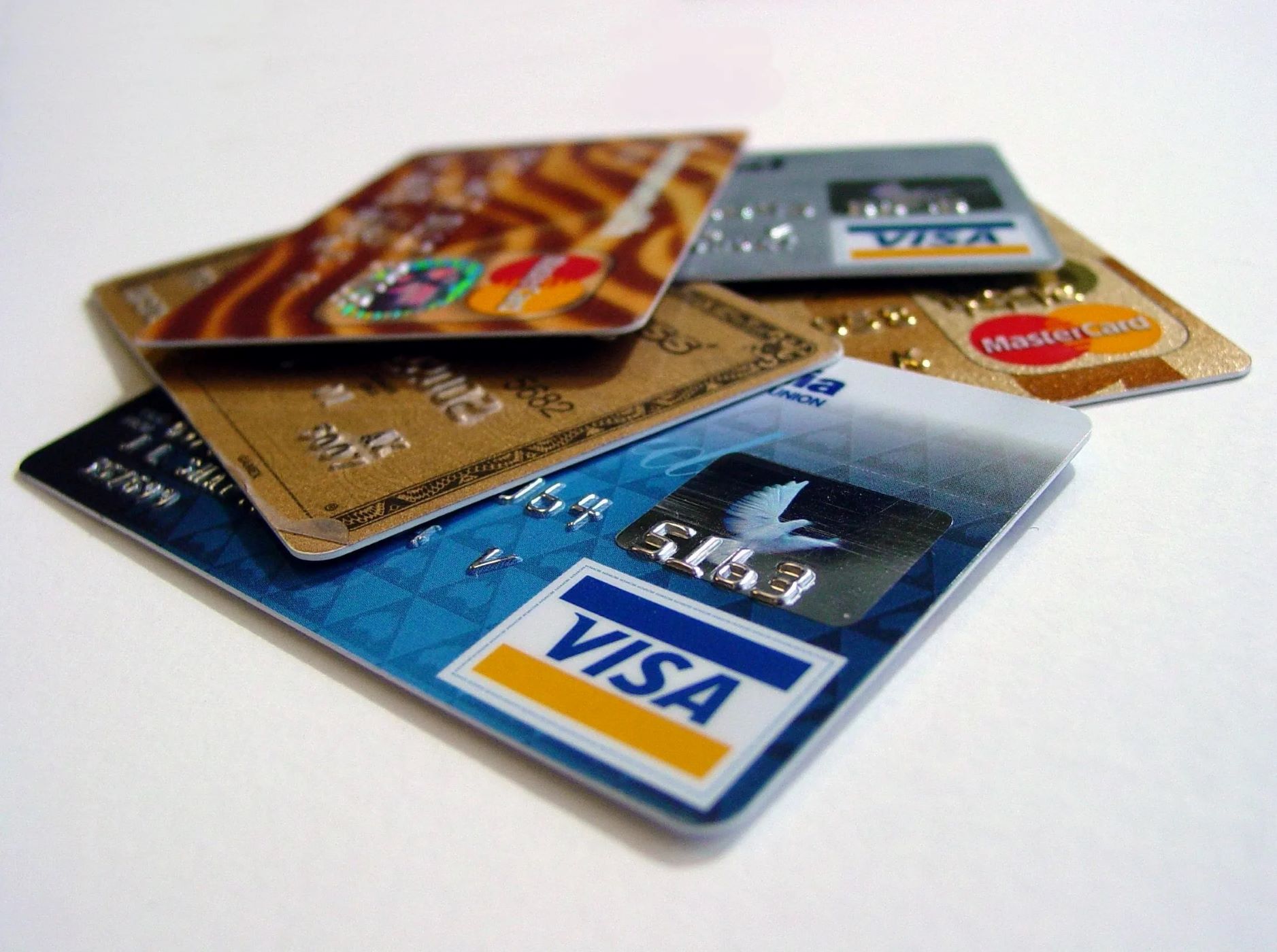

Finance
How To Pay Off $10 000 Credit Card Debt In 6 Months
Modified: December 29, 2023
Learn effective strategies to pay off $10,000 credit card debt in just 6 months and take control of your finances.
(Many of the links in this article redirect to a specific reviewed product. Your purchase of these products through affiliate links helps to generate commission for LiveWell, at no extra cost. Learn more)
Table of Contents
Introduction
Having credit card debt can be a significant financial burden, but with the right strategy, it is possible to pay off a substantial amount of debt in a relatively short period of time. In this article, we will discuss how to pay off $10,000 in credit card debt in just six months. By following these steps and making a commitment to financial discipline, you can regain control over your finances and become debt-free.
Before we delve into the steps, it is important to understand the impact of credit card debt on your financial well-being. High-interest rates and mounting debt can escalate financial stress, leading to a cycle of minimum payments and accumulating interest charges. By addressing your credit card debt head-on, you can save money on interest and improve your financial future.
It’s important to note that paying off $10,000 in six months requires a focused and dedicated approach. This plan may not be suitable for everyone, as it depends on individual financial circumstances. However, regardless of the amount of debt you have, the principles outlined in this article can be applied to help you pay off your outstanding balances more efficiently.
Now, let’s get started with the steps you can take to pay off your credit card debt.
Step 1: Assess the Current Financial Situation
The first step in paying off $10,000 in credit card debt is to assess your current financial situation. This involves taking a detailed look at your income, expenses, and outstanding debts.
Start by gathering all of your credit card statements and making a list of your total outstanding balances. Note down the interest rates, minimum payments, and due dates for each card.
Next, calculate your monthly income from all sources. This includes your salary, side hustles, and any additional income. Understanding your income is crucial in determining how much you can allocate towards paying off your debt each month.
After calculating your income, tally up your monthly expenses. Be thorough and account for all your fixed expenses, such as rent or mortgage payments, utilities, insurance, and transportation costs. Don’t forget to include variable expenses like groceries, entertainment, dining out, and subscriptions.
Once you have a clear picture of your income and expenses, subtract your total expenses from your total income. If the result is a positive number, you have a surplus each month. If it’s negative, you’re spending more than you earn, and immediate action is required to cut back on non-essential expenses.
Understanding your income and expenses is just the first step. It’s important to assess your spending habits, identify areas where you can cut back, and create a realistic budget that allows you to allocate a significant portion of your income towards debt repayment. Look for expenses that can be reduced or eliminated, such as eating out, entertainment subscriptions, or shopping for non-essential items.
By assessing your current financial situation, you will have a clear understanding of how much you can realistically afford to allocate towards your credit card debt each month. This knowledge will form the basis for the rest of the steps in paying off your debt and setting yourself on the path to financial freedom.
Step 2: Create a Budget
Once you have assessed your current financial situation, the next step in paying off $10,000 in credit card debt is to create a budget. A budget is a financial roadmap that outlines your income, expenses, and debt repayment plan.
Start by listing all your sources of income. This includes your salary, any side hustle income, rental income, or any other sources of money coming in. Be sure to include the after-tax amounts to get an accurate picture of your available funds.
Next, outline your monthly expenses. Categorize your expenses into fixed expenses (rent/mortgage, utilities, insurance) and variable expenses (groceries, dining out, entertainment). Don’t forget to include debt payments, such as student loans or car loans, in your expense list.
Once you have listed all your income and expenses, subtract your total expenses from your total income to determine your discretionary income. This is the amount of money left over after covering your essential expenses.
Now comes the crucial part of the budgeting process – allocating funds towards debt repayment. Take a close look at your discretionary income and consider how much you can realistically afford to put towards paying off your credit card debt each month. The more you can allocate towards debt repayment, the faster you’ll be able to eliminate your debt.
It’s important to establish a realistic timeline for paying off your $10,000 debt. Set a target date that allows you to allocate a significant portion of your discretionary income towards debt repayment while still maintaining a sustainable lifestyle.
Consider utilizing tools and apps that can help you budget effectively. Many personal finance apps offer features like expense tracking, spending categories, and budgeting tips. Choose the one that best suits your needs and helps you stay on track with your financial goals.
A budget serves as a roadmap to guide your financial decisions. It helps you prioritize your spending, stay accountable, and make conscious choices to eliminate debt. Remember, sticking to your budget requires discipline and commitment, but the reward of becoming debt-free and gaining financial freedom will be well worth the effort.
Step 3: Cut Back on Expenses
To pay off $10,000 in credit card debt in just six months, it is crucial to cut back on unnecessary expenses. By making small adjustments to your spending habits, you can free up more money to put towards debt repayment. Here are some practical ways to reduce your expenses:
- Review your monthly bills: Take a close look at your recurring bills and see if there are any services or subscriptions you can live without. Cancel unnecessary subscriptions, negotiate lower rates for utilities or insurance, and consider downgrading your cable or internet package.
- Reduce dining out and entertainment: Eating out at restaurants and attending entertainment events can quickly add up. Opt for home-cooked meals and find cost-effective ways to have fun, such as hosting game nights or enjoying outdoor activities.
- Limit impulse spending: Before making a purchase, ask yourself if it is something you truly need or simply a desire. Challenge yourself to delay non-essential purchases and consider if you can find a more affordable alternative or even do without.
- Shop strategically: Take advantage of sales, discounts, and coupons when shopping for groceries and other essentials. Consider buying in bulk for items you regularly use, but be mindful of expiration dates to avoid waste.
- Reduce transportation costs: Evaluate your transportation expenses and see if there are ways to save. Consider carpooling, using public transportation, or even biking or walking for shorter distances.
- Minimize credit card usage: While working towards paying off credit card debt, it’s important to avoid adding more debt. Limit your credit card usage to emergencies and focus on using cash or a debit card for your daily expenses.
Remember, cutting back on expenses doesn’t mean completely depriving yourself of enjoyment. It means prioritizing your financial goals and making conscious choices about where to spend your money. By identifying and eliminating unnecessary expenses, you can redirect those funds towards paying off your credit card debt faster.
Step 4: Increase Income
To accelerate your journey towards paying off $10,000 in credit card debt in six months, consider finding ways to increase your income. By boosting your earnings, you can allocate more money towards your debt repayment plan. Here are some strategies to increase your income:
- Explore side hustles: Take advantage of your skills and talents by finding a side gig or freelance work. This could include freelance writing, graphic design, tutoring, pet sitting, or driving for ride-sharing platforms. Look for opportunities that align with your strengths and interests.
- Ask for a raise: If you’ve been working diligently and exceeding expectations in your current job, it may be time to have a conversation with your employer about a raise. Highlight your accomplishments and the value you bring to the company to make a compelling case.
- Seek additional employment: Consider taking on a part-time job or a weekend job to supplement your main income. Look for opportunities in your field or explore industries that offer flexible working schedules.
- Monetize your hobbies: If you have a hobby that has marketable potential, such as crafting, photography, or baking, consider selling your creations or offering services. Utilize online platforms and social media to reach a wider audience and generate income.
- Rent out assets: If you have spare rooms, a vacation property, or a car that you can live without, consider renting them out to generate additional income. Platforms like Airbnb or car-sharing apps can help you find tenants or customers.
- Take on overtime or extra shifts: If your current job offers overtime or extra shifts, volunteer to take on additional hours to increase your income. This can significantly boost your earnings and expedite your debt repayment process.
Increasing your income requires dedication and commitment, but the additional funds you earn can make a substantial difference in paying off your credit card debt. Explore the options that best suit your skills, availability, and interests, and be proactive in seeking opportunities to boost your income.
Step 5: Prioritize Debt Payments
When you have $10,000 in credit card debt to pay off, it’s important to prioritize your debt payments strategically. By focusing on high-interest debts first and employing effective payment strategies, you can save money on interest and pay off your debt more efficiently. Here’s how:
- Identify high-interest debts: Take a close look at the interest rates on your credit cards and prioritize paying off the cards with the highest interest rates first. By doing so, you’ll save more money in the long run, as high-interest debts accumulate more interest over time.
- Pay more than the minimum payment: Make it a habit to pay more than the minimum payment amount on your credit cards each month. By paying only the minimum, you’ll be stuck in a cycle of interest charges and take longer to pay off your debt. Aim to allocate as much as possible from your budget towards debt repayment.
- Consider the debt snowball or avalanche method: Two popular debt repayment strategies are the snowball method and the avalanche method. With the snowball method, you focus on paying off your smallest debt first while making minimum payments on other debts. Once the smallest debt is paid off, you move on to the next smallest debt. The avalanche method, on the other hand, prioritizes paying off debts with the highest interest rates first, regardless of the balance. Choose the method that aligns best with your financial goals and motivates you to keep tackling your debt.
- Explore balance transfer options: If you have a credit card with a high-interest rate, consider transferring the balance to a card with a lower or even 0% interest rate for a promotional period. This can help you save on interest charges and make it easier to pay off your debt.
- Stay organized and track your progress: Keep a spreadsheet or use a personal finance app to track your debt repayment progress. Seeing your balances decrease and tracking milestones can keep you motivated and accountable to your financial goals.
- Avoid accumulating more debt: While you are focused on paying off your existing debt, it’s crucial to avoid adding more debt. Use credit cards sparingly or put them away altogether until you have paid off your outstanding balances.
By prioritizing your debt payments strategically and taking advantage of payment strategies, you can make significant progress in paying off $10,000 in credit card debt. Stay committed to your plan and celebrate each milestone along the way, knowing that financial freedom is within reach.
Step 6: Consider Debt Consolidation or Negotiation Options
When faced with $10,000 in credit card debt, exploring debt consolidation or negotiation options can be a viable strategy to help simplify your payments and potentially lower your interest rates. Here are a few options to consider:
- Debt consolidation loan: A debt consolidation loan allows you to combine multiple debts into a single loan with a lower interest rate. By consolidating your credit card debt, you’ll have one monthly payment to focus on, making it easier to manage your debt and potentially save on interest charges.
- Balance transfer credit card: If you have a good credit score, you may qualify for a balance transfer credit card with a promotional 0% interest rate for a certain period. Transferring your high-interest credit card balances to a 0% interest card can provide temporary relief from interest charges and allow you to pay off your debt more quickly.
- Debt management plan (DMP): A DMP involves working with a credit counseling agency to negotiate lower interest rates and monthly payments with your creditors. The agency will create a repayment plan that consolidates your debts and helps you become debt-free in a specific timeline. However, it’s important to carefully research and choose a reputable credit counseling agency to ensure they have your best interests in mind.
- Debt negotiation or settlement: In some cases, you may be able to negotiate with your creditors to settle your debt for a reduced amount. This option typically requires demonstrating financial hardship and may have a negative impact on your credit score. It’s important to consult with a professional or credit counselor before pursuing this option.
- Seek professional advice: If you’re unsure about the best route to take or how to negotiate with your creditors, consider consulting with a financial advisor or credit counselor. They can guide you through the process, provide personalized advice, and help you explore the most suitable options for your unique financial situation.
Each debt relief option has its own considerations and potential impacts on your credit. It’s crucial to thoroughly research and understand the terms and implications of any debt consolidation or negotiation option before moving forward. Consider consulting with a financial professional who can provide personalized guidance based on your specific circumstances.
Step 7: Stay Motivated and Track Progress
As you work towards paying off $10,000 in credit card debt, it’s important to stay motivated and track your progress along the way. Here are some tips to help you stay focused and monitor your debt repayment journey:
- Set achievable milestones: Break down your debt repayment goal into smaller, achievable milestones. Celebrate each milestone you reach, whether it’s paying off a specific credit card or reducing your overall debt by a certain amount.
- Track your progress: Use a spreadsheet, a debt tracking tool, or a personal finance app to track your progress regularly. Seeing your debt balances decrease over time can be incredibly motivating and serve as a visual reminder of your accomplishments.
- Find a support system: Share your goal with friends and family who can offer support and encouragement throughout your debt repayment journey. Consider joining online communities or forums where you can connect with others who are also on the path to financial freedom.
- Reward yourself: Treat yourself to small rewards along the way for reaching certain milestones or sticking to your budget. Celebrating your progress can help you maintain motivation and stay committed to your debt repayment plan.
- Focus on the future: Remind yourself of the benefits of becoming debt-free. Visualize the financial freedom, reduced stress, and increased savings that await you once you’ve paid off your credit card debt. Keeping your eyes on the long-term benefits can help you stay motivated in the face of challenges.
- Adjust your plan if needed: If unexpected expenses arise or your financial situation changes, don’t be afraid to reassess and adjust your debt repayment plan. Flexibility is key, and making necessary adjustments will help you stay on track towards your ultimate goal.
- Celebrate your success: Once you have successfully paid off your $10,000 credit card debt, take a moment to celebrate your achievement. Treat yourself to a special reward or indulge in a small splurge. You have worked hard to eliminate your debt, and you deserve to celebrate your financial accomplishment.
Remember, the journey to becoming debt-free requires discipline, dedication, and perseverance. Stay focused on your goal, maintain a positive mindset, and celebrate each step forward. With determination and a solid plan, you can overcome your credit card debt and regain control of your financial future.
Conclusion
Paying off $10,000 in credit card debt may seem like a daunting task, but with careful planning, discipline, and a commitment to financial fitness, it is achievable. By following the steps outlined in this article, you can create a solid strategy to eliminate your credit card debt in just six months.
Start by assessing your current financial situation, creating a budget, and cutting back on unnecessary expenses. Look for ways to increase your income and allocate as much as possible towards debt repayment. Prioritize your debt payments by focusing on high-interest debts first and consider options like debt consolidation or negotiation to simplify your payments and potentially reduce interest rates.
Throughout your debt repayment journey, it’s important to stay motivated and track your progress. Celebrate milestones, find a support system, and visualize the financial freedom that awaits you. Stay flexible and adjust your plan as needed to accommodate unexpected expenses or changes in your financial situation.
Finally, when you have successfully paid off your credit card debt, take a moment to acknowledge your accomplishment. Celebrate your financial freedom and use the lessons learned during this process to maintain responsible financial habits going forward.
Remember, paying off your debt requires commitment and sacrifices, but the rewards are immeasurable. By taking control of your finances and eliminating your credit card debt, you will lay the foundation for a secure and prosperous financial future. So, start implementing these steps today and pave the way towards a debt-free life.
